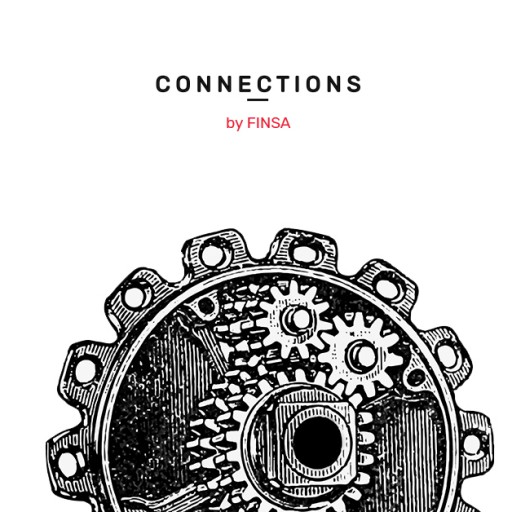Can you imagine saying goodbye forever to your alarm clock and clocking on every day at work, and instead being able to spend your time doing things that you’re really passionate about? According to followers of the FIRE movement, all of this is possible if you plan well and start to build on your savings early.
What does FIRE mean?
FIRE is the acronym for “Financial Independence, Retire Early”, which says that we can all achieve enough financial independence to retire early. At a time when pensions are no longer certain, it doesn’t seem all that crazy to join a movement that will give you the peace of mind to face your future.
Saving, austerity, and investment are the three pillars of the FIRE movement. The “classic” FIRE movement says that you need to save 25 times the amount that you spend on your annual expenses. To be able to do this, you need to save 50% or more of your salary. However, doing so would mean you would only be able to cover your expenses for 25 years after retirement. That’s why you need to use these savings to get passive income: automatic income that doesn’t require any work from you as it comes from financial or real estate investments.
How to achieve financial independence: the 4% rule
The key is in the 4% rule, established by three professors at Trinity University in Texas in 1998, which states that if the percentage of profits that you get from your investments is 4%, you will always be able to live off your annual profits without having to dip into your savings.
Let’s look at an example: if your annual expenses amount to 15,000 euros, you must first save 375,000 euros. You will then be able to live on 4% profit, which is equivalent to the 15,000 euros you spend annually, for the rest of your life. The time it takes to save those 375,000 euros will depend on your salary and on the amount you save: if you earn 30,000 euros and save 50%, you will need 25 years. If you started working at 22, you will be ready for retirement by the age of 47.
However, there are some doubts around these estimations, given that a drop in the market or a financial emergency could do away with all these calculations. That doesn’t even take into account inflation and devaluation, or the fact that the advice about saving is not very realistic.
Some myths about the FIRE movement
- FIRE movement followers want to stop working
Actually, most people that follow the movement aren’t looking to spend the rest of their lives on the sofa. What they really want is the ability to choose what they spend their time doing, be it travel, spending time with their family, or working on something that they actually enjoy without having to worry about earning less while doing it. As Mr Money Moustache says, “FIRE is about not doing any job that I wouldn’t do for free”.
- In order to achieve financial independence, you have to make sacrifices
One of the essentials for FIRE is saving, but within reason. For Gwen Merz, the key is cutting down on unnecessary expenses until the point where you feel uncomfortable, and then living just above that. It’s not about having to dumpster dive for food, but rather living your life better and enjoying things without having to spend a lot of money.
- The FIRE movement is only possible for people with high salaries
There is the traditional FIRE, but there are also different variations which adapt to different income levels. Lean FIRE is based on maintaining the simplest lifestyle possible on a tighter budget, which reduces the amount of money you need to cover your expenses and makes it more accessible to people on lower salaries. The other extreme is Fat FIRE, which is designed for people with a high income that want to maintain their more luxurious lifestyle after retirement, meaning that they have to spend more time saving. The Barista FIRE option is based on combining passive income that feeds into your savings with the active income of a part-time job.
The people already in the FIRE
Fourteen years ago, the man known as Mr Money Moustache, Pete Adeney, stopped working when he turned 30, as did his wife. Their story inspired many people to join this movement, which includes advice as simple as don’t ask for loans, use a bike, and stop making irrational purchases.
In the FIRE world, there are different levels of dedication. At one extreme is Sylvia Hall, who decided to save 70% of her income in order to retire at 40 with 2 million dollars in savings, something she achieved by depriving herself of several things. At the other end of the spectrum would be Lacey Filipich, who considers herself “time rich” because she decides if, when, where, how, on what, and with whom she works, thanks to the financial independence she has gained by investing her savings since she was 19 years old.
Grant Sabatier tells his story on Millennial Money: in just five years, he went from having two dollars in his account to having more than a million dollars thanks to work and investments.
But the FIRE path is not always one way. Once a point of reference for the movement, Sam Dogen (Financial Samurai) decided to start working again after eight years of retirement. After having a child, Dogen felt that his economic situation was not secure enough, but he also confessed to not having adapted well to his new lifestyle.
The digital community around FIRE
The growth of the FIRE movement is closely linked to the expansion of the internet, which allows its believers to share their experiences and advice digitally, creating a community that is spread out all over the wold. If you’re interested in joining, check out these blogs or books, the Firedrill and Financial Independence Europe podcasts, or one of the many forums about the FIRE movement that can be found online.




